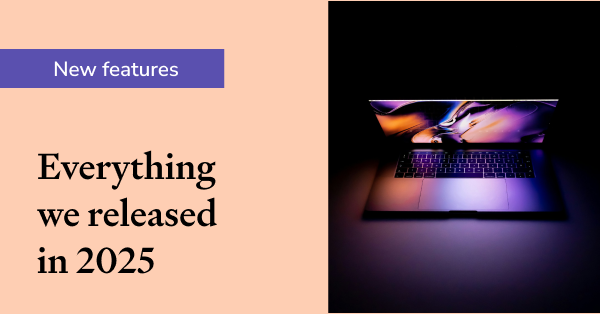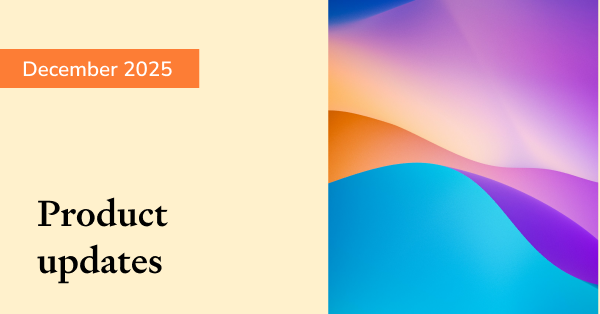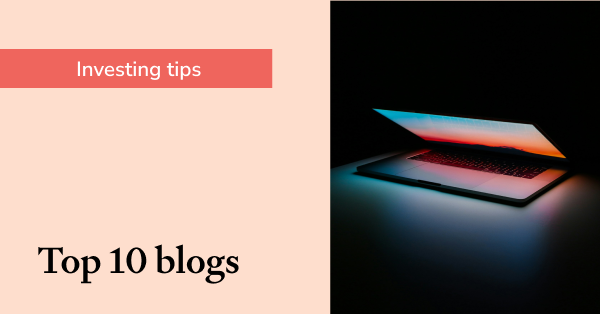Why risk and return is more important than ever for investors
To say the stock market has been volatile in recent years would be an understatement. There is a lot of uncertainty about where the economy – and markets – are heading, but where less educated investors become discouraged and pull back from the market, those armed with the power of knowledge will find opportunities to thrive. A key element in this is risk. Essentially, as an investor, you need to decide what your chosen risk profile is at any given time, and how your portfolio actually stacks up against this risk profile. This article will explain what risk is, how it’s measured and how investors can use it to their advantage.

Defining risk
As investors, we all understand that there is an element of risk in every decision we make. In official terms, we can define investment risk as any uncertainty (related to your investments) that has the potential to negatively impact your finances.
Of course, no one would invest if there was no opportunity to make a positive financial return. There is potential to make a return on any asset you invest in (provided it’s legitimate), but there are no guarantees and certain asset classes are definitely known to be riskier than others.
Take cash vs. equities as an example. Cash is generally considered one of the safest possible asset classes, while equities is one of the riskiest. But the trade-off is that lower risk is typically commensurate with lower returns, while higher risk is commensurate with higher returns. Therein lies the age-old dilemma all investors must face – whether to take on higher levels of risk for the potential of higher returns, or whether to have lower risk and lower potential returns.
Questions investors must ask themselves
Deciding on the risk profile for your investment portfolio is a decision that’s personal to you as an investor, and a worthwhile discussion with your financial advisor. However, here are some questions you might want to ask yourself:
- Am I willing to live with some volatility and drawdown in my portfolio? How much and for how long?
- Does my chosen risk profile make sense according to my investing time horizon? Does it align with my goals as an investor?
And importantly:
- Am I choosing the right investments and asset classes to align with my chosen risk profile?
Risk is not all-or-nothing
It’s important to note that risk is not an all-or-nothing position for an investor. Risk is a spectrum, and along that spectrum are many different asset classes which you can use to make up your portfolio. By carefully choosing diversified investments and asset classes, you can customise your portfolio’s risk profile to your personal comfort level and investing goals.
One common example is the 60/40 portfolio – an oft-recommended portfolio composition of 60% equities (growth assets) and 40% bonds (defensive assets), which is said to be a safe strategy for investors to grow their wealth over time, no matter the market conditions, with relatively low risk. The idea is that if left to compound over time, a 60/40 portfolio should produce a decent return, as it’s suitably diversified to weather any downturn in the market or economy while also capitalising on strong market conditions.
The concept of a 60/40 portfolio has been around since the inception of Modern Portfolio Theory in 1952, and some might argue that while this was optimal in the past, it no longer fits our current investing (and economic) landscape. While it is true that sticking only to equities and bonds could be limiting, especially in the age of ETFs, there is something to be said for a portfolio that balances growth and defensive assets.
The data speaks for itself. Looking at annual returns on a 60/40 portfolio between 1999 and 2023 (pictured below), there was some drawdown during key economic periods such as the burst of the dot-com bubble, the GFC and the recent COVID-19 pandemic, but there was also significant upside and the net return (as of April 2023) is positive. While there may be other investing strategies that produce a higher return, the 60/40 portfolio is a good example of how implementing a balanced risk profile can help you hedge your bets as an investor. There are countless iterations based on various risk profiles such as the 80/20 portfolio, the 70/30 portfolio, the core satellite approach, and many more – the decision is up to you.

Annual return on a 60/40 portfolio from 1999-2023 (as of 12 April). Source: Matt Phillips, Axios Markets
How to measure risk
It’s all good and well to know your preferred risk profile, but without the ability to actually measure your risk on a portfolio level, you are pretty much flying blind with your investments. Referencing the 60/40 strategy mentioned above, it’s not enough to simply allocate 60% of your investments to equities and the other 40% to bonds. You need to be making the right investments within these asset classes to align with your chosen risk profile.
To do this, you need a way to measure the risk of your investments and how they impact your portfolio as a whole. There are many different ways to do this, and it’s helpful to have an understanding of the more classical methods of risk measurement:
- Alpha: An investment’s excess return (or loss) compared to its stated benchmark
- Beta: The volatility of the investment compared to the overall market
- R-squared: The portion of return based on the market’s movement
- Standard deviation: The array of returns along a distribution curve
- Sharpe ratio: A measure of risk-adjusted return that displays how much excess return you receive for the volatility of holding a risky asset
- RoMaD A risk-adjusted return metric that calculates the return generated per unit of risk, particularly the maximum drawdown.
Classical definitions aside, the best way to measure risk is by using a combination of methods. At Sharesight for example, we’ve developed a risk reporting tool that gives investors a clear view of their risk at both the individual holding level and the portfolio level.
There are many elements that make up our measurement of risk, but perhaps the one of the most important is maximum price drawdown. Maximum drawdown refers to the maximum loss of an asset, from peak to trough. More specifically, it measures the drawdown of a share price from its peak to its trough, and the length of that period. It focuses on capital preservation, making it a highly relevant measurement in today’s volatile investing landscape.
Used in our risk report, it gives investors the ability to determine, had they sold an asset at a particular time, how much loss they would have taken on. When combined with return over the same period, the Return over Maximum Drawdown (RoMaD) metric provides a clear, actionable insight into the relative standings of your investments on a risk-adjusted basis.
Maximum drawdown is calculated using the formula below, with all values being dependant on the chosen period:
MDD = (Trough Value − Peak Value) / (Peak value)
The return value is calculated based on Sharesight’s performance calculation methodology, which once again is relevant to the time period selected.
These metrics will be displayed along with a chart that visually plots your investments (or asset classes) along risk and performance axes, as well as a series of data underneath to give you a precise numerical breakdown of the portfolio’s risk. Highly customisable, the report gives you the ability to aggregate the results by categories such as market, country or custom groups, and to add or remove investments – making it easy to see the impact of specific investment decisions over any chosen time period. You even have the ability to compare your portfolio against the benchmark of your choice, adding an additional element of insight into your risk analysis.
Want to learn more about RoMaD?
The takeaway
As an investor, choosing a specific risk profile (and sticking to it), could potentially have a significant impact on your returns in the long term – for better or worse. In this case, there is no one right answer; it highly depends on how confident you are as an investor, what your time horizon is and how much risk you are comfortable with. In this case, knowledge is key, but beginner investors should not feel discouraged – aligning your investments with a balanced risk profile is a good starting point, and you always have the option to shift your strategy and rebalance your portfolio should you choose to do so. Of course, we always recommend speaking to a financial professional to determine the best path forward.
From beginners to experienced investors, Sharesight’s free online portfolio tracker also gives you clear insight into your portfolio’s performance and tax reporting, making it easier than ever to make informed investment decisions. And with our drawdown risk report, we hope to further arm investors with the power of knowledge, because any investor can be a good investor with the right information and tools.

Disclaimer: This article is for informational purposes only and does not constitute a specific product recommendation, or taxation or financial advice and should not be relied upon as such. While we use reasonable endeavours to keep the information up-to-date, we make no representation that any information is accurate or up-to-date. If you choose to make use of the content in this article, you do so at your own risk. To the extent permitted by law, we do not assume any responsibility or liability arising from or connected with your use or reliance on the content on our site. Please check with your adviser or accountant to obtain the correct advice for your situation.
FURTHER READING

Every feature Sharesight released in 2025
In case you missed any of our monthly updates, here’s a full recap of all the new Sharesight features and improvements released in 2025.

Sharesight product updates – December 2025
This month's key focus was on the launch of the Tasks tab, an improved Overview page, and additional support for 20,000+ bonds on the LSE.

Sharesight's top 10 investing blogs of 2025
We look back on your favourite Sharesight blogs, from Sharesight feature explainers to users' favourite brokers, a compilation of world's best blogs and more.